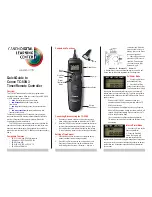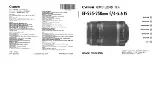
AVT GigE Cameras Installation Manual V1.1.0
38
Using multiple cameras
Using multiple cameras
There is a number of different methods for configuring a multiple camera sys-
tem. Most of these can be differentiated into two architectures: Single Ethernet
port and Multiple Ethernet port. In order to determine which architecture is
needed, start by calculating the amount of bandwidth required from the cam-
eras based on the desired resolution, pixel format, frame rate and number of
cameras.
Bandwidth = Width x Height x Bytes Per Pixel x Frame Rate x Number of Cameras
= Value in MBps (Megabytes per second)
Example 1:
Three GC1020 cameras, full resolution, Mono8 pixel format (1 byte per pixel),
at 30 fps.
Bandwidth usage = 1024 x 768 x 1 x 30 x 3 = 70.8 MBps
Percentage of single port GigE bandwidth = 57%. Single port architecture is suf-
ficient.
Example 2:
Three GC650 cameras, full resolution, Mono16 pixel format (2 bytes per pixel),
at 90 fps.
Bandwidth usage = 659 x 493 x 2 x 90 x 3= 175.4 MBps
Percentage of single port GigE bandwidth =140%. Multiple port architecture is
needed.
Example 3:
Three GC1380C cameras, full resolution, Bayer16 pixel format (2 bytes per
pixel), 20 fps.
Bandwidth usage = 1360 x 1024 x 2 x 20 x 3 = 167.1 MBps
Percentage of single port GigE bandwidth = 134%. Multiple port architecture is
needed.
Gigabit Ethernet bandwidth is 1 Gbps (Gigabit per second) ~ 125 MBps (Mega-
bytes per second). Example 1 can be accommodated using a single Ethernet
port, whereas, example 2 and 3 require multiple Ethernet ports in order to
increase the available bandwidth.
















































